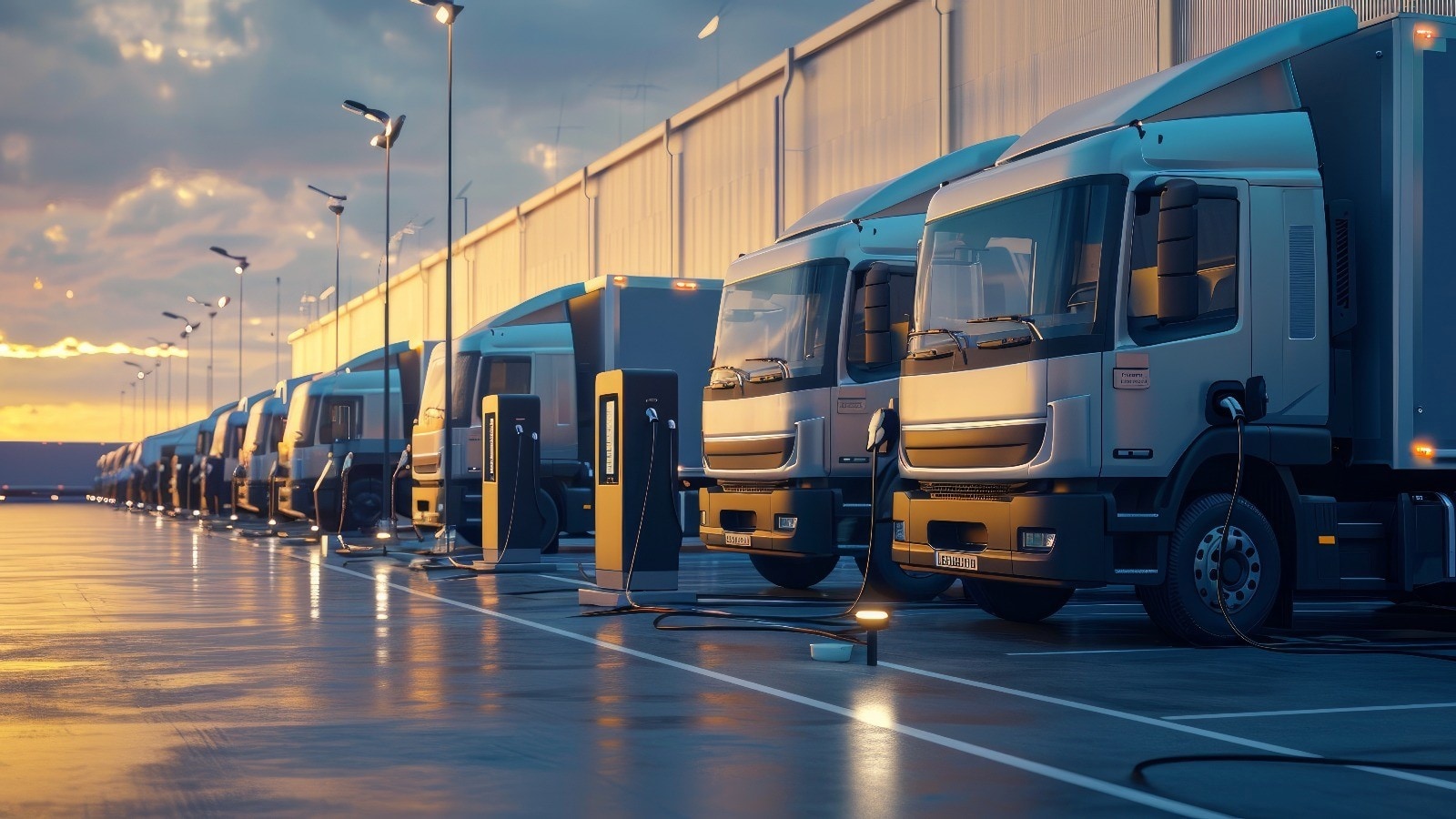By 2040, 100% of new light and commercial vehicles sold in the EU will be zero-emission vehicles. This transition, with light vehicles leading the charge, will result in nearly 50% of the EU’s annual fleet mileage being decarbonised. And it will deliver significant economic and environmental value—some €330 billion in cumulative total-cost-of-ownership savings and a cumulative reduction in CO2 emissions of more than 1 billion tonnes by 2030. These are among the key findings of a new report on European fleet electrification by Strategy&, PwC’s strategy consulting business, and the Fraunhofer Institute for Systems and Innovation Research.
Even with these gains, zero-emissions vehicles (ZEVs) will still only represent just over a third of the EU fleet total in 2040; nearly 70% of vehicles will still be powered by internal combustion engines. Nevertheless, decarbonised mobility will account for nearly 50% of total annual fleet mileage by then. That’s because new vehicles tend to cover more miles in their first few years on the road and then level off as they age. Clearly, increasing the number of ZEVs will speed up the EU fleet transition.
Sowing the seeds for faster commercial fleet electrification
Important new initiatives aim to boost the demand and deployment of ZEVs. The first is the Effort Sharing Regulation, which was adopted in 2018. It sets nationally binding emissions-reduction targets for all EU member states and aims to reduce GHG emissions from transport and buildings by 40% by 2030 compared to 2005 levels. A second set of initiatives encourages the rollout of infrastructure; it includes support for ZEV-charging facilities throughout the Trans-European Transport Network and €189m for projects supporting greener mobility through the Alternative Fuels Infrastructure Facility scheme.
What’s the impact on your business?
The electric vehicle fleet transition will significantly impact three key areas. The first is the total cost of ownership. Transitioning the EU light vehicle and truck fleet will save around €590 billion in operational costs each year and will achieve cumulative savings of nearly €4 trillion by 2040. That’s the equivalent of nearly 25% of Europe’s total GDP in 2022.
Second is the scale of CO2 emissions. The transition will save around 370 million tonnes of CO2 each year up until 2040. During that time, light-vehicle emissions will drop by 47% and truck emissions will fall by 51%.
Third, it will have major implications for energy demand. If 2030 targets are met, fleet electrification will account for 130 terawatt hours (TWh) of demand in 2030. That’s an amount equivalent to 25% of Germany’s total electricity consumption today.
These projections are encouraging but depend on a number of variables. Perhaps the most important is the pace of demand for ZEVs. Even slight variations from timeline for reaching the projected sales targets—say, a delay of fewer than five years or acceleration by two years—would have a substantial impact on electrification and on the number of zero-carbon fleet miles driven. This, in turn, will impact emissions reductions and the demand for energy.
What stakeholders can do to accelerate the fleet transition
Decarbonising the European fleet will benefit the entire business and transportation community. Here’s how relevant stakeholders can take ownership and action.
- Automotive companies can increase the average ZEV range, improve their aftermarket capabilities and strive to acquire new competencies to hasten the transition.
- Fleet providers can better manage their evolving fleet, rethink their concepts around mobility and understand the need for new investment thinking.
- Energy companies can build the required charging infrastructure, extend renewable-energy supply and manage the grid to meet this shift in demand.
- The public sector can both use the regulatory environment to encourage transition and ZEV mileage, and invest to foster new competencies.
- The financial sector can help companies secure financial backing, rethink how to finance mobility and facilitate new collaborations across sectors.
With all stakeholders working together, the EU fleet electrification transition can remain on course and at the pace needed to deliver real change.
European Fleet Electrification: From Electric Vehicle Sales to a Complete Fleet Transition
Smart mobility
Accelerating the global transition to connected, sustainable and autonomous mobility
Contact us

Harald Wimmer
Partner, Global Automotive Leader, and Global Smart Mobility Co-Leader, PwC Germany



















